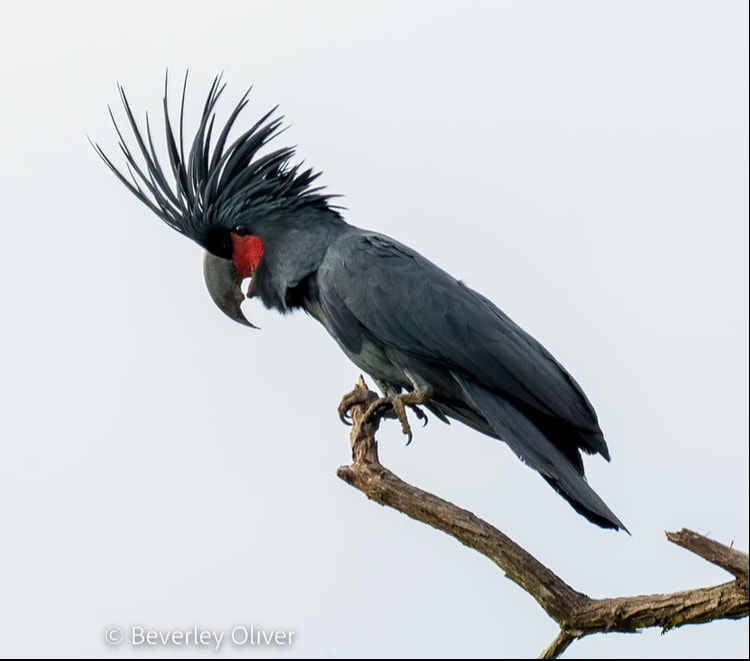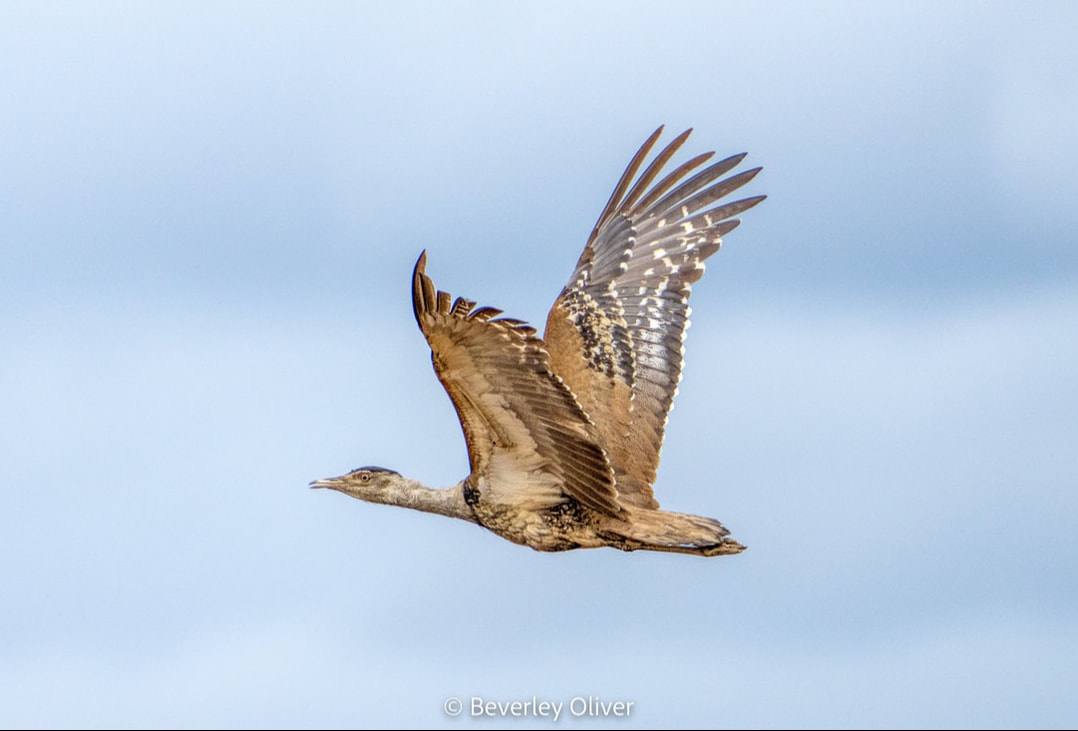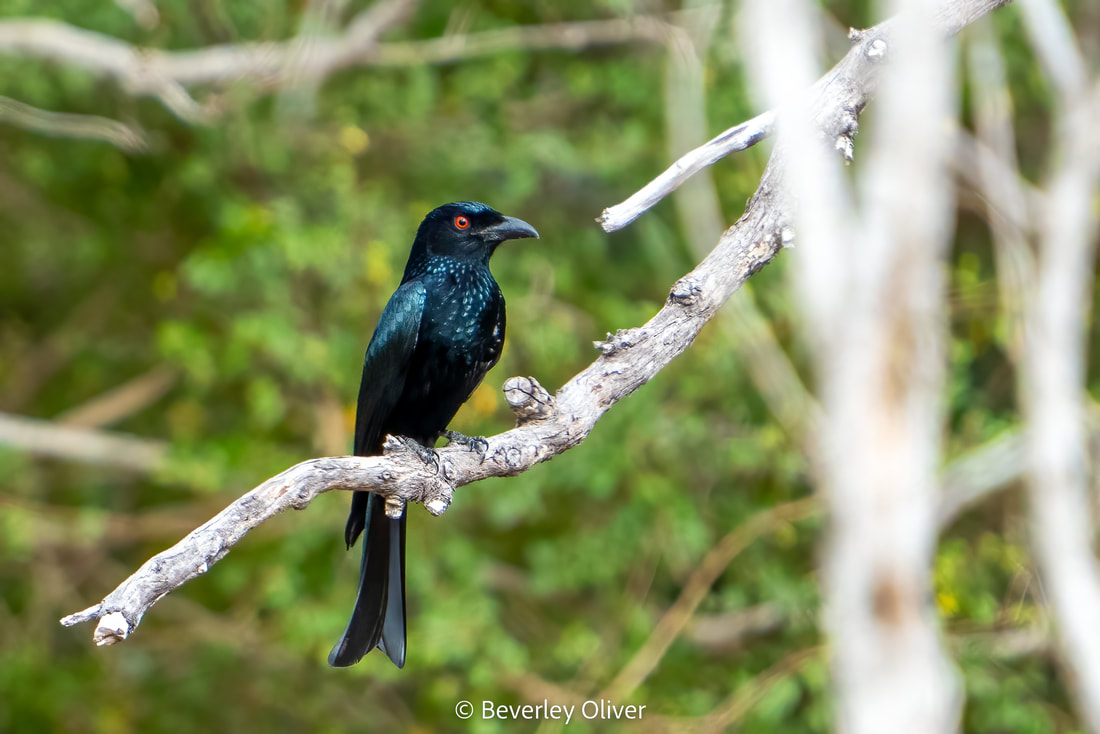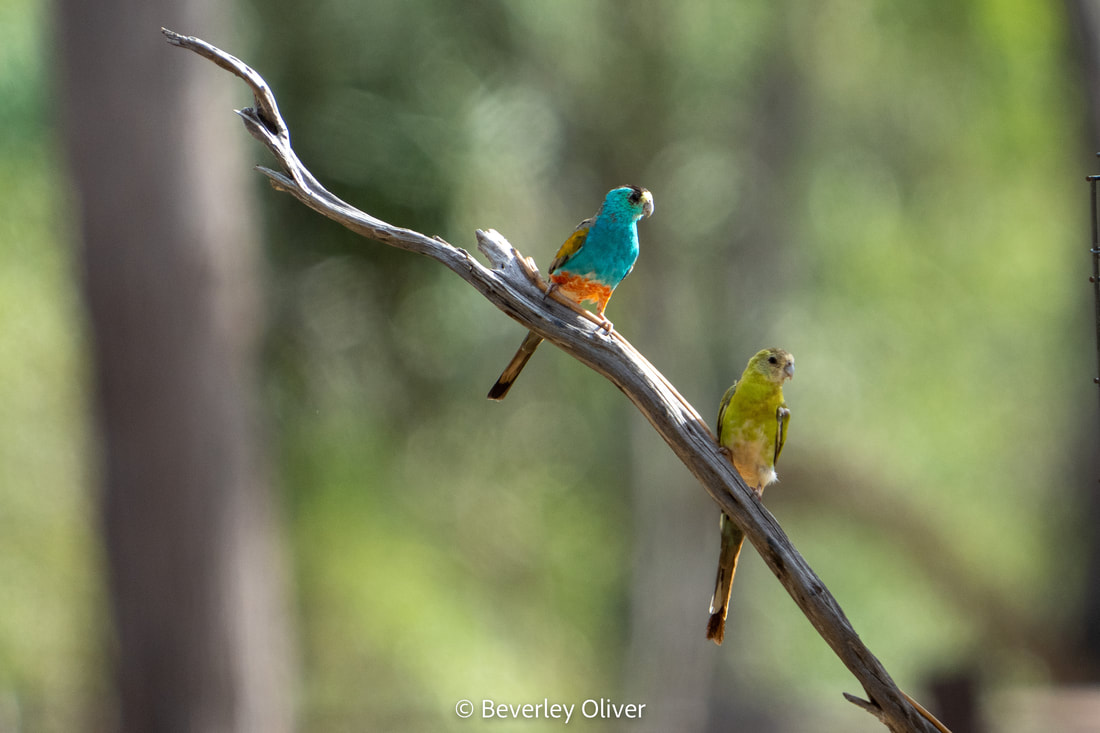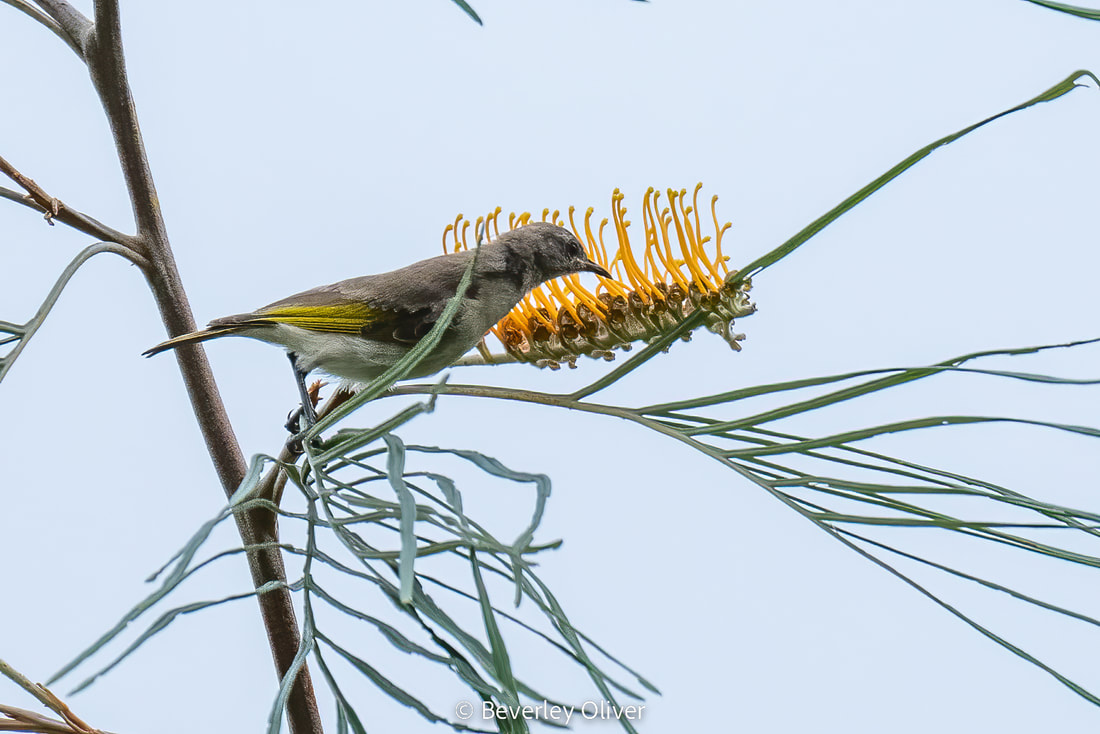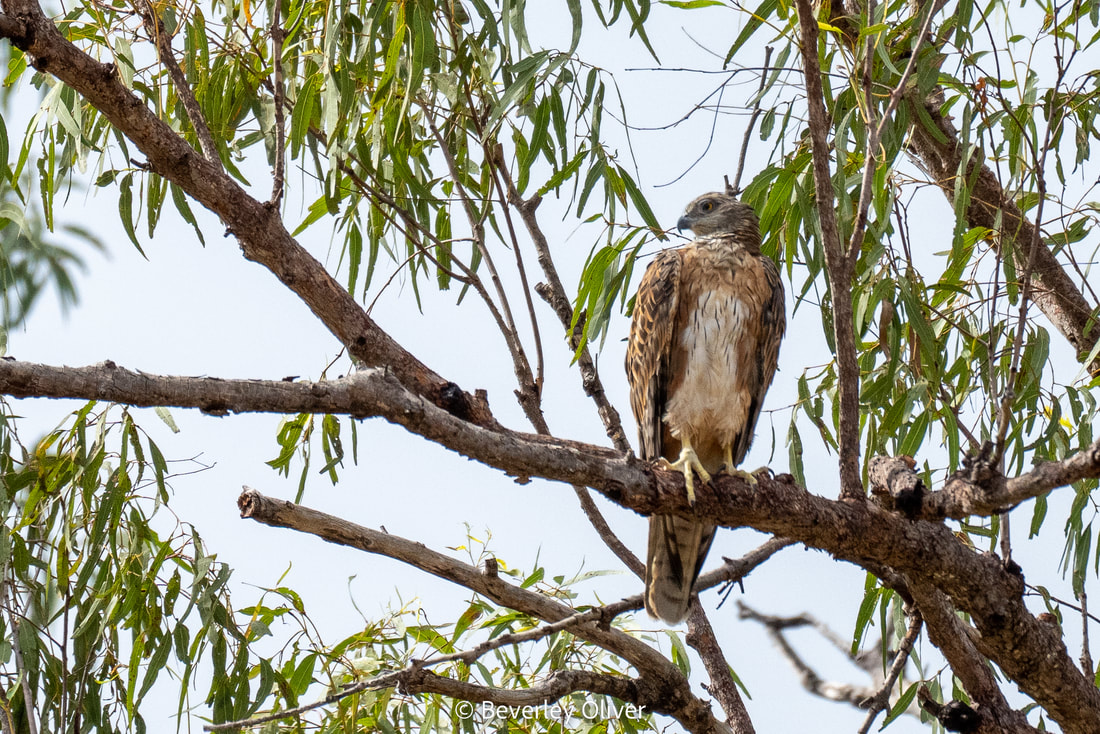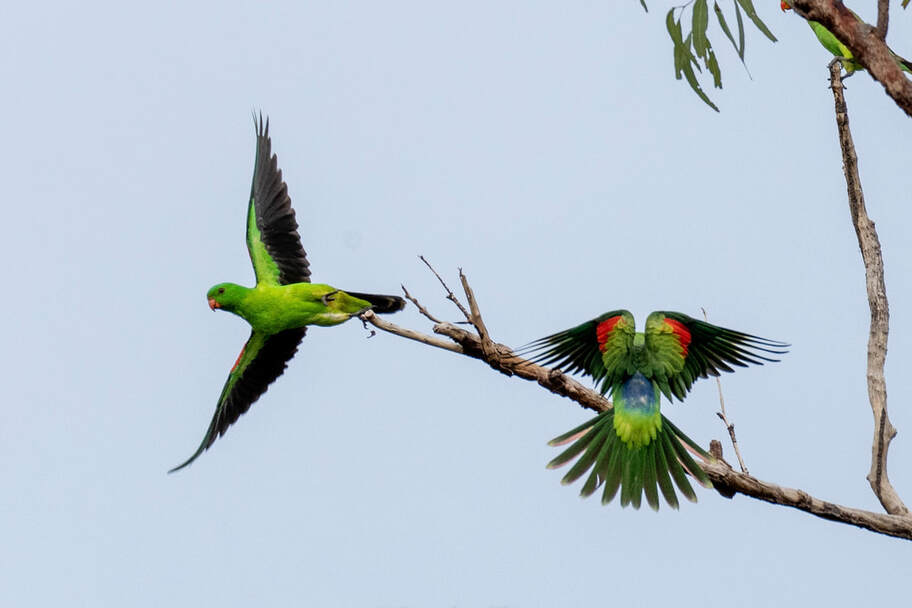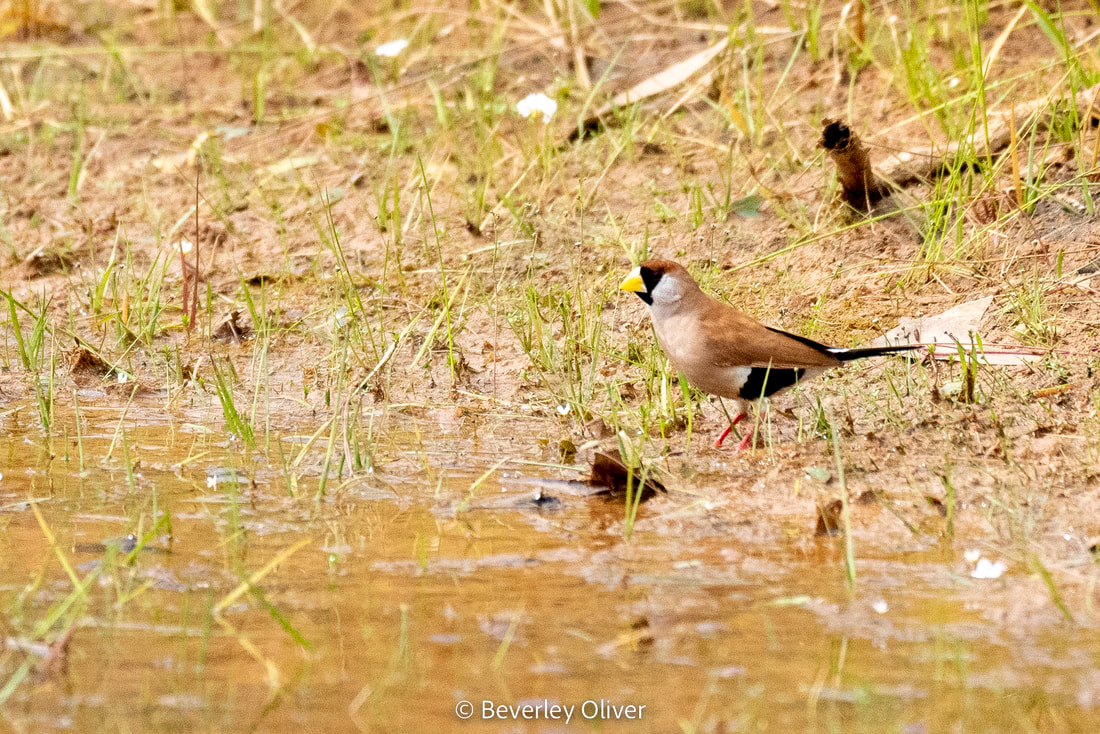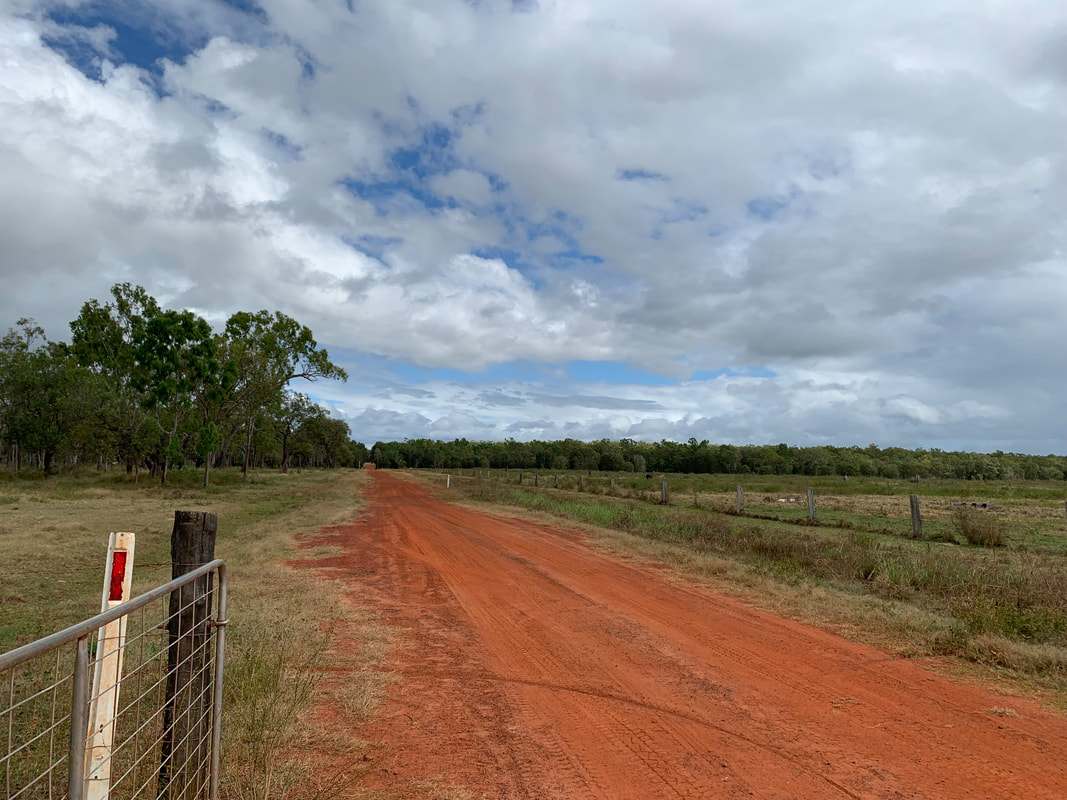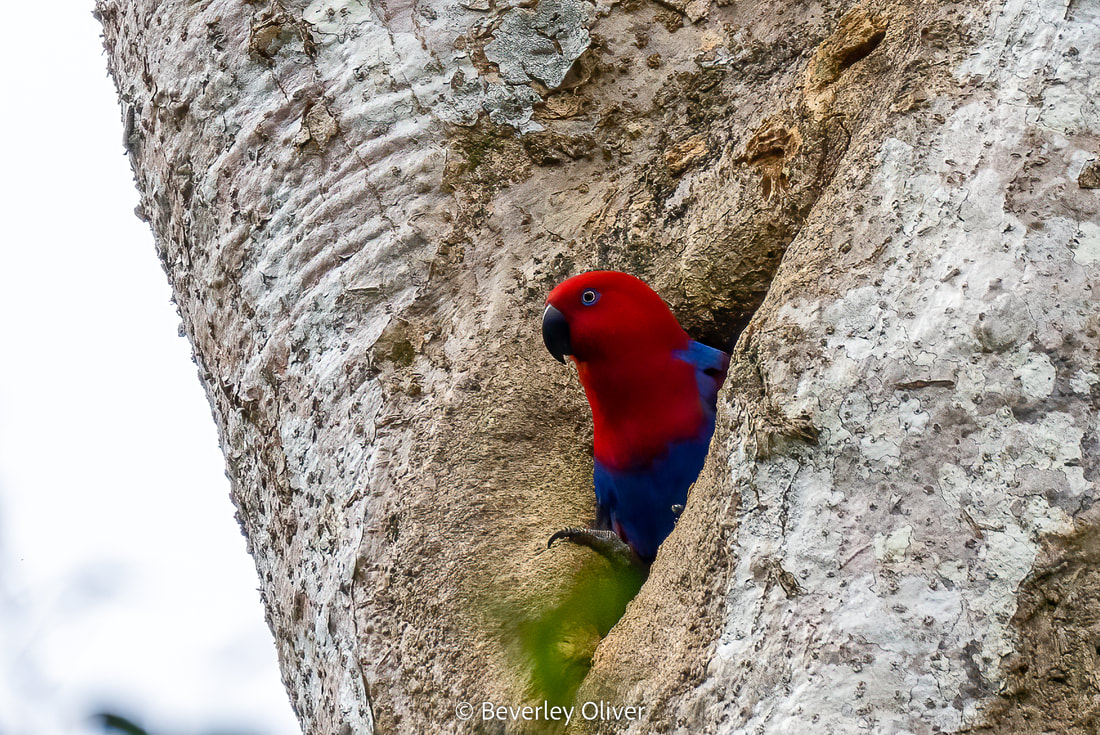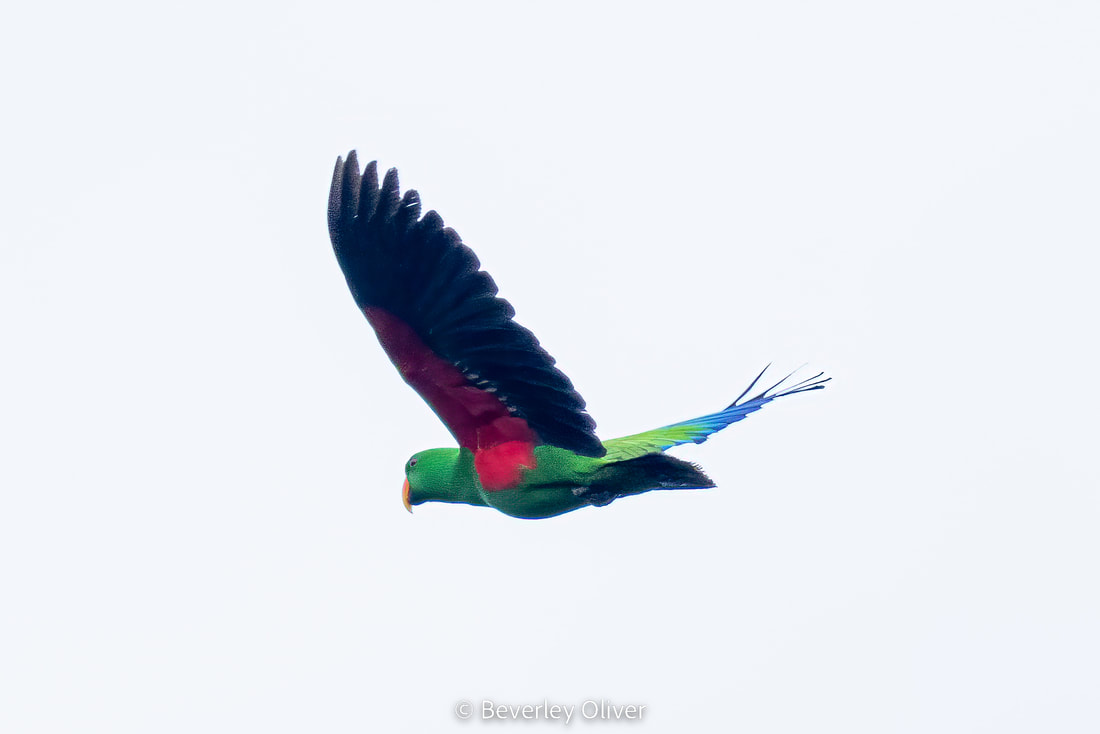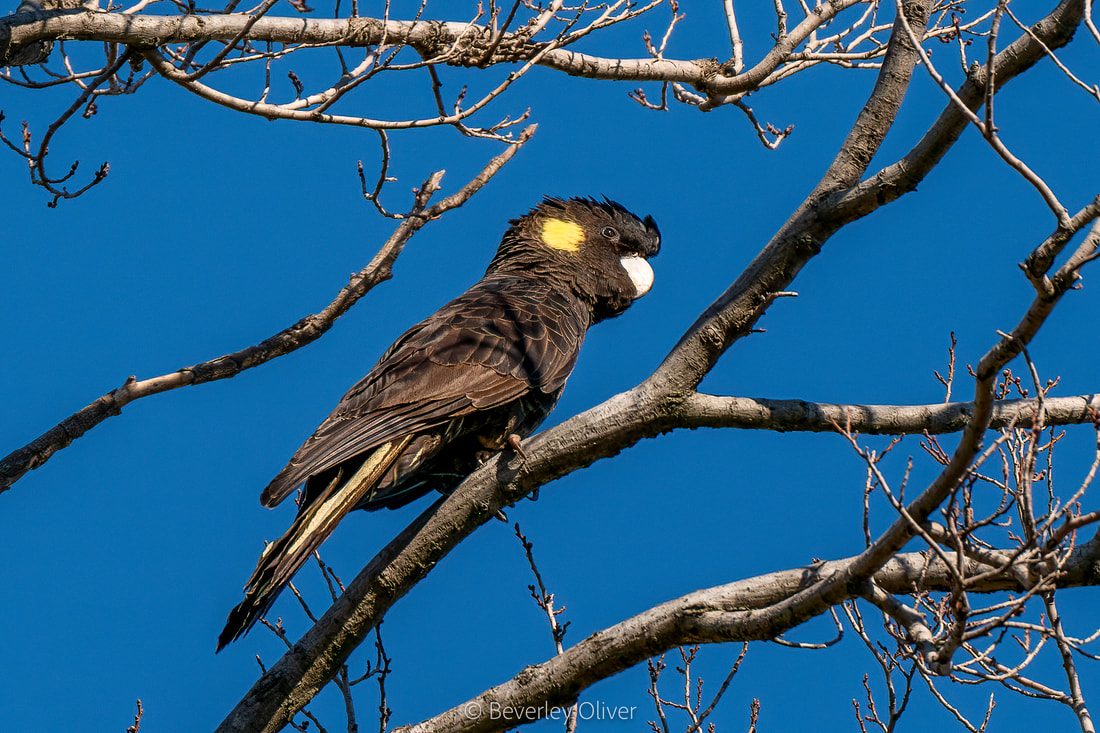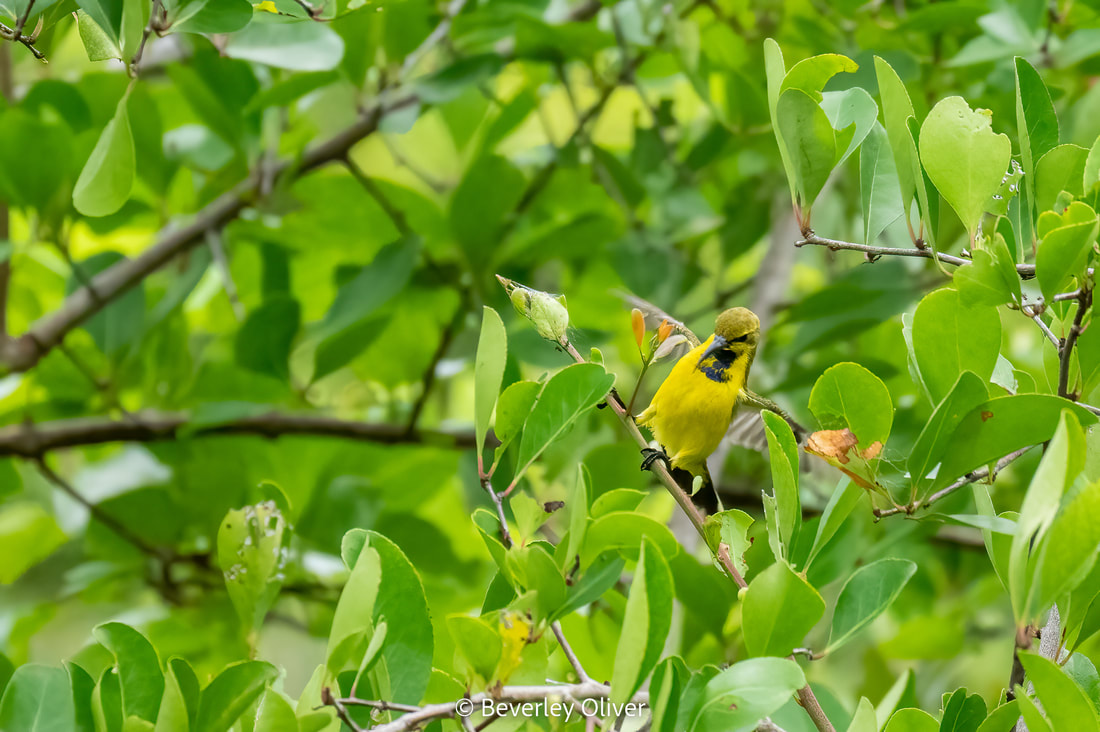|
We went on our first birding tour - and to Cape York. Here is what we saw and experienced, and what we think of the idea of a bird tour... We were delighted to meet our guide, David Mead, and our fellow travellers early morning on day one – everything suggested that this was going to be fun, and it certainly was. That first day we drove to the northern part of the Atherton Tablelands, through Mt Molloy and Mt Carbine, before heading up the Peninsula Development Rd to our first overnight stop at Musgrave Telegraph Station. There were plenty of stops on the way – and brilliant birds to see and hear. Highlights for us included several lifers: a great bower bird, Australian bustard, squatter pigeon, red-backed kingfisher, the Australian pratincole, diamond doves and, a spangled drongo. And then, not one but four juvenile golden-shouldered parrot juveniles then an adult pair, and a blue-winged kookaburra. Plenty of other great birds were around - bar-shouldered doves, blue-faced honeyeaters, little friarbirds and pale-headed rosellas among them. After such a long drive, Musgrave Roadhouse was a welcome site. The meals on offer were roadhouse staples, and much appreciated. Even better, that roadhouse was home for two nights, so we could concentrate on birding the next day. On day two we concentrated our efforts around Lakefield (Rinyirru) National Park. It’s hard to describe that rich day without simply listing even more lifers. Key moments included seeing heaps of various honeyeaters including yellow-tinted, banded and rufous-throated in flowering grevillea trees (the flowers as stunning as the birds). Raptors were in good supply: we saw an enormous wedge-tailed eagle using its wingspan to rise above its roadkill feast, a black-breasted buzzard circling overhead (more than once), and best of all, a red goshawk awaiting her mate among the tall timbers. But there was also keen action in the parrot department, with some great views of four red-winged parrots. We’ve had little luck with finches, so we were delighted to learn that David was a ‘finch man’. His considerable skill meant we saw many, including black-throated and masked finches, as well as varied sitella, along the roadside. It seems so easy when you know where and when to look – knowledge acquired by our guide over many years. On day three we headed further north across the Wenlock and Pascoe rivers to Iron Range National Park (Kutini Payamu), Australia’s largest lowland tropical rainforests. En route, we passed through the settlements of Coen and Archer River (roadhouse). Morning coffee was most welcome - we were greeted by a prominent sign that said: “The coffee is instant and only comes in regular size. Consider it part of your cape adventure”. I had the tea! It was clear that most of our fellow travellers were in fact heading up to the Tip, or camping elsewhere. Many seemed in a hurry to get to the Tip to get the T-shirt. Good for them – but we were so happy to be not doing that. The road to Iron Range was a challenging drive as the roads were wet and the rivers, the Wenlock and Pascoe, and the creeks were swollen from the unseasonal rain, particularly at Browns creek. It wasn’t clear whether we would get through, actually, so were glad to be in the capable hands of an experienced guide who knew all the roads (and roadworks) in great detail. But our concerns dissipated on arrival – or actually the instant we spied our first female eclectus parrot nesting in the hollow of a Milkwood tree. Wow! We really were in Iron Range! We hoped to see the bright green male – his piercing call suggested he was nearby. Sometime later we saw the iridescent green of the male eclectus flying across our path in the rainforest. We had arrived! We stayed at the Iron Range Cabins near the airport – these were high quality and very comfortable, and we even had limited wifi. On our first evening, the park staff provided an excellent meal of grilled salmon and salad. Amazing dining in such a remote place where food supply cannot be taken for granted. Our next day was also amazing – but it would be very boring to simply list all the lifers we saw (but keep an eye on our Insta posts and you'll see many in the days and weeks to come), tempting as that is – but we have to share that we were super thrilled to see about eight palm cockatoos around Lockhart River – wow! We were told to look for the nonda plum trees and beach almonds – favourites of these very special creatures. And there they were – palm cockatoos feasting on the grass, or up in the trees. It was a very windy morning – and these birds already have very challenging hairdos. It was truly delightful to see so many of them – we count ourselves very lucky indeed. One of the big topics of conversation as we drove about the rainforest and other areas was the unseasonal rain which was threatening to curtail our trip as the roads become impassable with trucks and 4WDs and caravans chewing up the dirt. If the rain continued, we could be stuck in Lockhart River for weeks, with air travel the only way out. After much consultation with locals, satellite maps and weather channels it was clear that heading home a day early was the wisest option. But before we left, we headed to Chilli Beach and Portland Roads where we visited the Out of the Blue Cafe, dining on the deck overlooking the bay. The local reef fish was grilled to perfection and the meal was rounded out with their signature desert: frozen pecan pie and ice cream. On the way home we did some spotlighting, highlights including the Papuan Frogmouth, a Brown Tree Snake (Night Tiger Snake), a Northern Brown Bandicoot, a short-nosed Echidna, and a Spectacled Hare Wallaby. We were sorry to leave a day early but it was the wisest decision given the downpour that was occurring right down the Queensland coast. We left once our guide felt it was safe, travelling over gravel, mud and overflowing watercourses. We finally arrived at Musgrave Telegraph Station, grateful to have survived the drive without incident. We are novice birders; our fellow travellers were far more experienced. Even so, we all agreed that the tour was well worth the time, effort and cost. Even though the weather was adverse, we collectively saw well over one hundred species of birds. Of those, over sixty were lifers for us, and over thirty were lifers for our companions. We certainly think the tour was valuable – to see so much of the landscape, the culture, the birdlife, mammals and reptiles in such a short time. Not being 4WD owners, we would never have tackled Cape York in our car, but more importantly, we would never have had such a rich learning experience, nor would we have gotten to know our guide and learnt from his expertise, and our fellow travellers. We’re really glad we went and we highly recommend David Mead and Great Northern Birding Tours. We’re already eyeing off future itineraries.
Comments
|
SUBSCRIBETo get blog updates, signup when the form appears on screen, or contact us. We'll contact you about once a month with an update. To find a blog about a bird or a place, use this search bar, or check out our Google map.
Archives
September 2023
|
